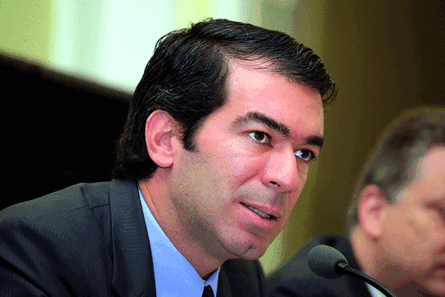VRG Linhas Aereas, using the Varig brand, has a new and more modest role in the Gol airline group. From mid-October it will operate only three medium-haul Boeing 737-800 routes: to Bogota, Caracas and Santiago. Gol is taking over all domestic and short-range international routes, marking the end of the Varig brand within Brazil.
Three South American routes is a far cry from the role that Gol president envisioned for Varig a year ago. At that time he spoke of rebuilding Varig's former international presence, starting with 14 Boeing 767s leased to launch Varig back into a long-haul network to Europe.
But within months of starting the European plan collapsed, leaving Gol in a quandary over what to do. The 767s proved to be the wrong aircraft for Varig, and Gol wanted to standardise on a single type. Moreover, as Oliveira told local reporters: "We had flights by Varig and Gol on the same [domestic] routes with one company weighing down against the other." A strategy re-think was clearly in order.
 |
|---|
Yet Gol's hands were tied until it could integrate the two airlines into one system. Under Brazilian law Gol was required in the absence of regulatory approval to treat Varig as a separate airline. In June, Brazil's antitrust agency was the first to give this clearance. ANAC, the Brazilian civil aviation authority, followed in September when it allowed Gol and Varig to merge operations under a single air operator's certificate. This cleared the way for Gol to redefine Varig's role, a move it made within weeks.
Assigning these medium-haul routes to Varig allows it to focus on higher-yield traffic. Passengers on these longer flights are mainly business travellers, Gol claims. For this reason, Varig now features a "comfort class" comparable to business class. With Gol focused on short-haul, low-cost traffic, this allows Varig to differentiate itself in the way Oliveira envisioned a year ago, even though it is only within South America rather than on flights to Europe.
Gol's vision for Varig's future in Europe turned sour partly because the 767 proved to be the wrong aircraft for long-haul routes at a time of rising fuel costs. Rival TAM also had a head start and better connections with European carriers.
OVERCAPACITY
Analysts claimed Gol paid too little heed to how much capacity the transatlantic market could absorb. JPMorgan warned: "Brazil's long-haul supply is already at a record high, so the need for 14 more 767s is unclear."
In Gol's defence, ANAC was pressuring Varig to relaunch routes before the end of last year under a use-or-lose deadline that had already been the subject of litigation. The chances of gaining another extension on that deadline seemed remote, so Varig was rushed to re-enter Europe.
Since Varig dropped the last of those routes in June, TAM has been Brazil's sole overseas carrier. OceanAir holds route authority to Mexico and Africa, which it does not use. This means that TAM now carries more than two-thirds of all international traffic flown by Brazilian airlines, and all of it beyond Latin America.
TAM's invitation into the Star Alliance will only aggravate Gol's lack of an overseas network or partner. The situation resembles Canada and Australia, where Air Canada and Qantas gain 5-10 points on their domestic market shares just from alliance partner feed. Like WestJet and Virgin Blue, Gol will struggle to offset a similar advantage for TAM.
Varig's three routes are unlikely to provide Gol with significant domestic feed, therefore, TAM's domestic market share dominance over Gol and Varig could grow. Two years ago, it was five points, and it has since broadened to 16 points. In addition, Azul's launch is more likely to impact Gol than TAM because its appeal is also to the low-cost sector.
Gol's quest to find the right role for Varig has hurt the carrier financially, but it is hard to pinpoint how much. Fuel costs and Brazil's aviation crisis last year after the fatal crash of a TAM flight savaged net results for both Gol and TAM. But Varig deserves some of the blame for Gol's steeper plunge. As Oliveira concedes, 2007 was a "year of transition and learning".
Beyond the three routes that Varig will serve, South America does not offer many other destinations with the range and business traffic that would allow Varig much expansion. Service beyond South America would require a longer-range aircraft. As that now seems unlikely, it also seems unlikely that Varig can expect to see much growth.
Gol's experiment with Varig has been somewhat unique. Network carriers around the world have formed low-cost units, but Gol is the first low-cost carrier to create a network carrier unit. After some trial and error, this experiment now seems to have a stable but modest future.
Watch our exclusive video interview with Gol's Constantino de Oliveira Jr here: flightglobal.com/deoliveira
Source: Airline Business
















